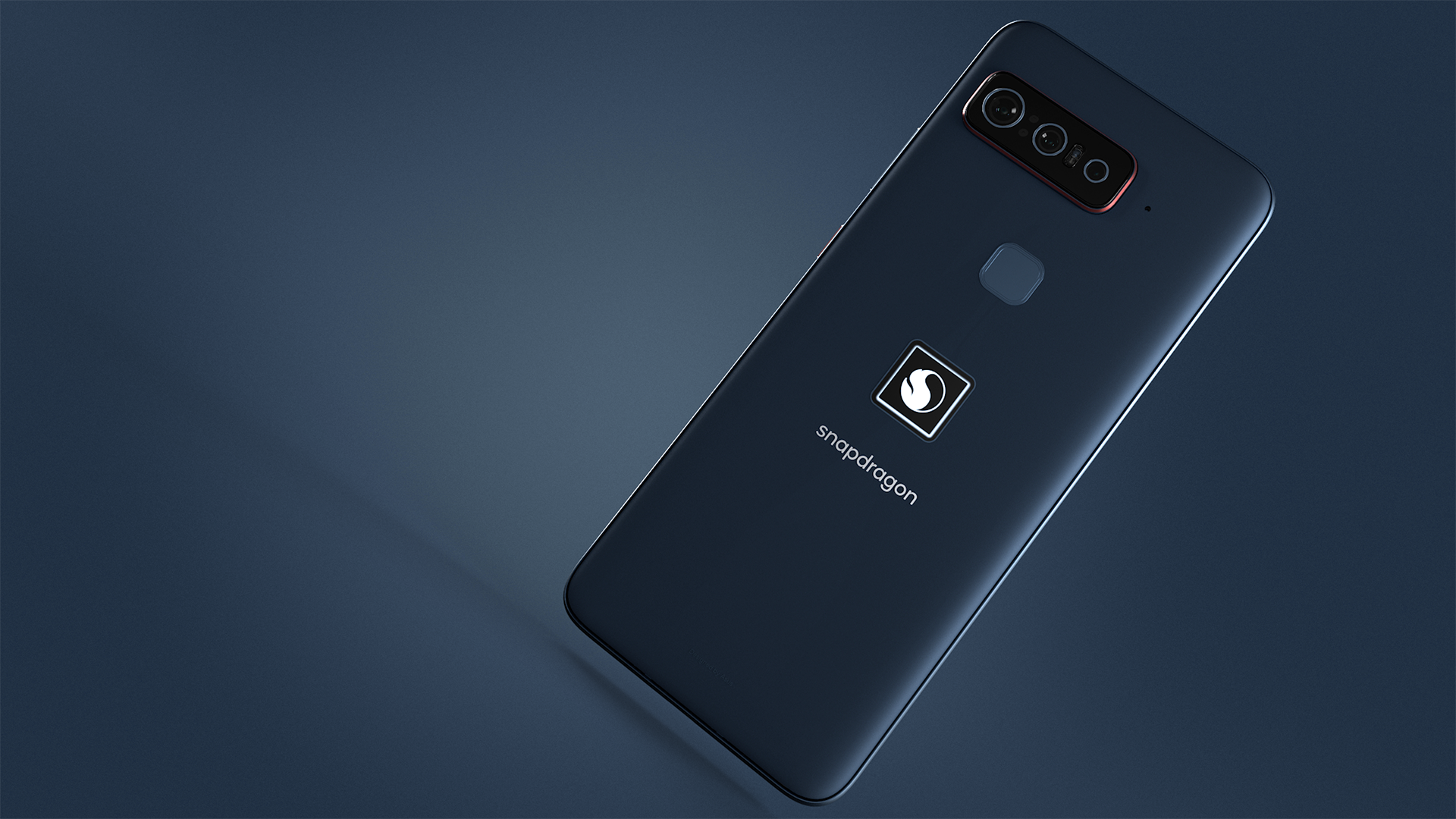Affiliate links on Android Authority may earn us a commission. Learn more.
Qualcomm built its ideal smartphone, but is it actually any good?
August 16, 2021
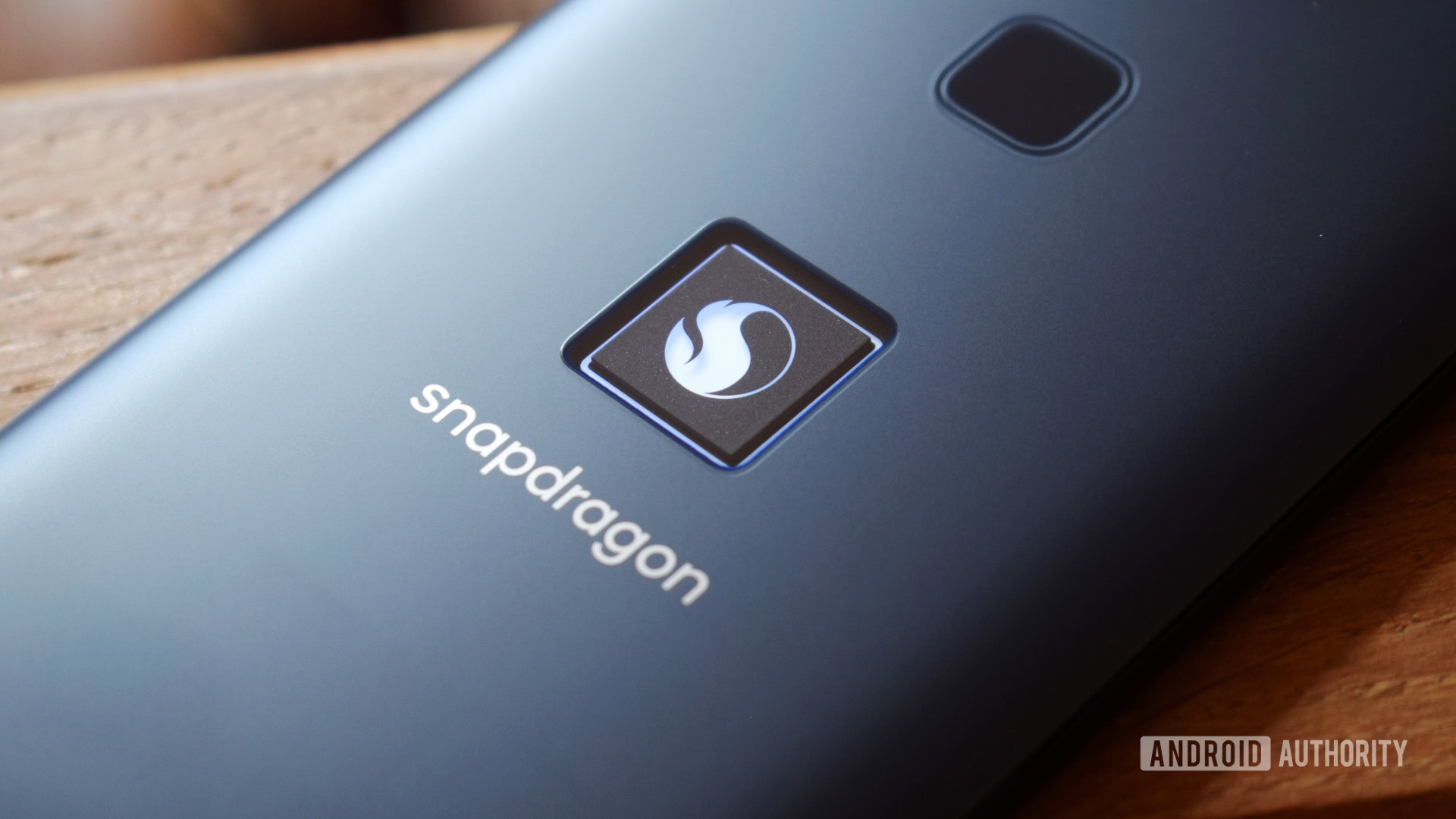
Qualcomm unveiled its Snapdragon Insiders community program back in early 2021 and unveiled the ASUS-made Smartphone for Snapdragon Insiders in July. Designed to appeal to the enthusiast market, the handset packs in the latest and greatest technology Qualcomm and its partners have to offer. Put simply, this is Qualcomm’s vision of what a smartphone should be. Having tested the clumsily named Smartphone for Snapdragon Insiders for over a week (the unit was provided by Qualcomm), I can certainly say it’s an interesting vision.
Headline specifications include a Snapdragon 888 processor, 16GB of LPDDR5 RAM, 512GB of internal UFS 3.1 storage, a 144Hz Samsung AMOLED display, a Sony-powered triple camera setup, Wi-Fi 6E and Bluetooth 5.2 support, and blazing fast 5G mmWave capabilities. But there’s much more than that tucked under the hood. Qualcomm has customized large parts of the Smartphone for Snapdragon Insiders (SFSI) to give power users better features and greater control than ever before.
Qualcomm is keen to let you (and everyone else) know it’s a Snapdragon-styled phone too. The SFSI boasts a light-up Snapdragon logo and branding on the back. The color scheme is also imbued with Qualcomm’s signature purple and red hues, culminating in a rather unconventional look.
Despite appearances, this isn’t a concept phone or one-off technological showpiece. It’s a fully-fledged handset with an all too real $1,499 price tag. So let’s dive into the technology inside the ideal Qualcomm smartphone to see what that price tag buys you.
Built for performance, cautious of battery life
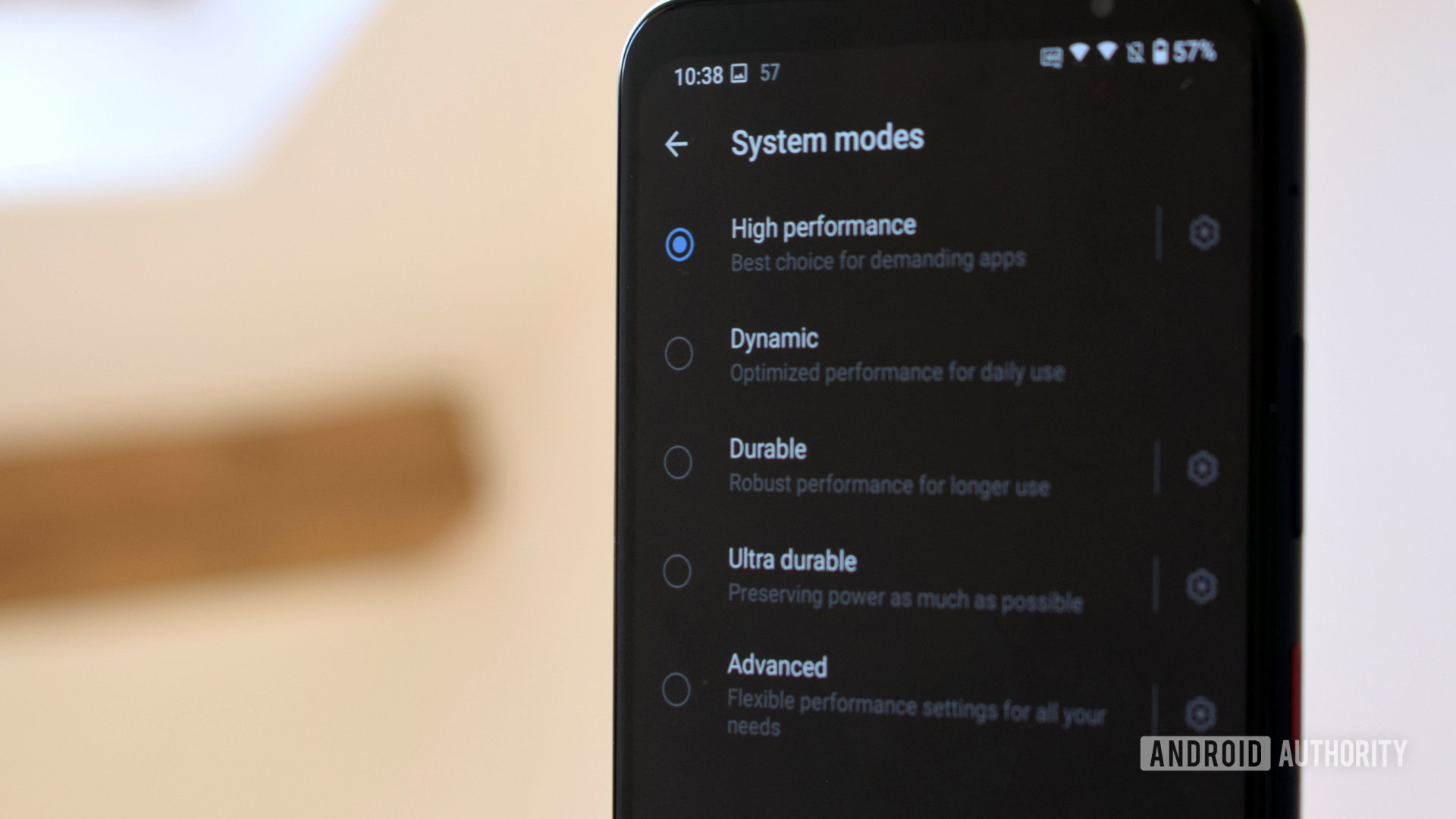
As the Smartphone for Snapdragon Insiders is based on the gaming-oriented ASUS ROG Phone 5, maximum performance from the phone’s Snapdragon 888 processor is of course on offer here. Oddly the company isn’t using its very own souped-up Snapdragon 888 Plus here. In reality, the 5% CPU speed increase compared to the standard Snapdragon 888 won’t be missed, but it’s still a glaring omission for a Qualcomm-branded product meant to showcase its best technologies. Furthermore, the phone releasing so late in the year also means we’re not far off from a new Snapdragon chip, so the SFSI won’t stay cutting edge for long.
The phone features a Snapdragon 888 processor, not the 888 Plus.
We’ll get into the benchmarks in a minute but before that a word on software. Qualcomm provides not one, not two, but five different performance options: High performance to chug down the battery, a balanced Dynamic setting, Durable for long battery life, Ultra Durable, and an Advanced mode where you can configure CPU, GPU, refresh rate, and other settings.
Interestingly, this reveals a little about what Qualcomm considers extreme, balance, and conservative performance levels for the Snapdragon 888. So I ran each mode through a selection of benchmarks to see where these all sit in the grand scheme.
Running at full potential, the SFSI is one of the fastest smartphones out there. It matched the OnePlus 9 Pro in our in-house Speed Test G benchmarks while beating other popular current-gen phones in GeekBench 5 and 3DMark by a reasonable margin. However, this mode saps battery life quite quickly and the phone becomes very hot after 15 minutes of intense benchmarks. It verges on too hot to hold.
When gaming with actual titles, such as Call of Duty Mobile, the phone’s temperature thankfully remains cooler and battery life isn’t strained quite so vigorously. But you will have to settle for just a few hours of high-performance use. Benchmarks are much more extreme than most mobile games, even with the graphics cranked up. You can certainly enjoy the high-performance mode on this phone, at least while the battery lasts.
Qualcomm's default Dynamic setting adjusts performance radically based on temperature and battery life.
It’s interesting that Qualcomm asks you to flip this mode on rather than defaulting to it. Out of the box, the handset’s Dynamic setting varies between slightly more and much more reserved. As well as dynamically adjusting the display refresh rate, this mode lowers CPU and GPU performance depending on temperature and remaining battery life. While a cool device almost matches the high-performance setting, stressing the handset with high temperatures drops performance closer to last generation’s Snapdragon 865 — sometimes scoring even lower, although performance typically ranged between these two extremes. The Durable mode sits at the lower end of this performance range, while the Ultra Durable setting pushes the handset down closer to a mid-range chipset but will take you through two days of use.
Snapdragon SoC guide: All of Qualcomm’s smartphone processors explained
Of course, with a smaller 4,000mAh battery than the ASUS ROG Phone 5’s 6,000mAh cell, Qualcomm could be playing it safe to help maximize the phone’s screen-on time and ensure it lasts all day (which it does). I’m quite a fan of giving users this level of control over their handset’s performance. But this assessment certainly won’t help quell reports that the Snapdragon 888 is power-hungry and runs a little too hot at full tilt.
Qualcomm’s latest bells and whistles
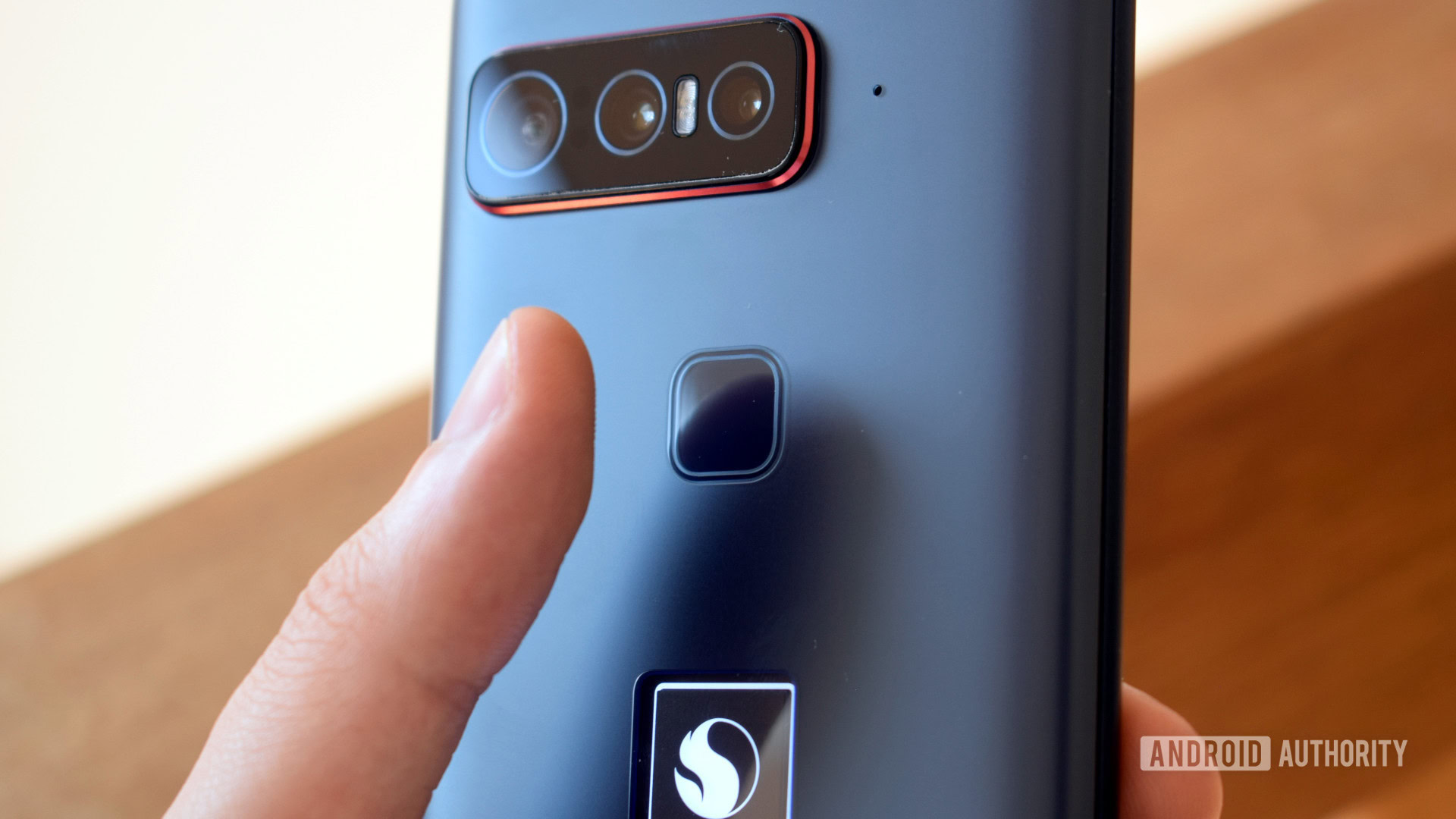
The Smartphone for Snapdragon Insiders really is a showcase of Qualcomm’s latest technologies. For instance, there’s a rear-mounted Qualcomm second-gen 3D Ultrasonic fingerprint reader. Qualcomm claims it’s 50% snappier than the first-gen model and it is reasonably snappy, taking no more than a second between touching the pad and unlocking.
If you’re not a fan of fingerprint scanners, Qualcomm leverages the power of its AI Engine for face unlocking too. This technology only uses the front camera, so isn’t the most secure implementation available, but it’s unbelievably fast. The setup process recognized my face in a fraction of a second, and the phone unlocked virtually as soon as I pressed the power button.
For the gamers out there, the handset sports Snapdragon Elite Gaming features. This includes variable-rate shading, 144Hz refresh rate support, and faster touch response. I clocked a few hours gaming on the device and the performance was flawless, as you would expect. Even with the graphics and frame rate cranked up, I didn’t need to flip on high-performance mode to ensure everything ran smoothly. As you’d expect from an enthusiast handset, Elite Gaming options empower users to customize graphical settings, performance, and refresh rate on a per-game basis too. So you can maximize those gaming hours or ramp up the visual fidelity, depending on your preference.
The SFSI is built with enthusiast-level customization in mind.
You’ll find a similar assortment of Qualcomm technologies packed into the phone’s triple camera setup too. Leveraging the phone’s triple ISP and AI Engine, the phone sports AI Auto Zoom to keep your subject in frame while shooting video, EIS and OIS stabilization technology, “professional-quality” bokeh blur, and low-light shooting.
Despite the great-sounding specs, the camera setup of the unit I tested was shambolic. I couldn’t switch camera lenses while shooting video, despite Qualcomm touting this as a major benefit of its triple ISP. Night mode and video weren’t supported using the telephoto lens and the app often froze after snapping pics and changing shooting modes. In a nutshell, many of Qualcomm’s signature photography technologies aren’t implemented in the phone yet. The actual pictures it captured were equally hit and miss and the selfie camera is particularly oversharpened.
Broadly speaking, pictures can look pretty good in decent lighting, although colors can be a bit oversaturated and the exposure isn’t always right. Bokeh blur and edge detection are particularly good. But HDR sometimes leaves ghosting and you’ll find clipped highlights in the odd picture. The telephoto zoom camera holds up reasonably well at 5x and even 10x, although there’s a notable sharpening pass on this camera. Unfortunately, the setup isn’t as good in low light, with a noticeable amount of noise. Night mode helps a lot, but it’s quite blurry and doesn’t work for the wide-angle and zoom cameras. As a showcase for Qualcomm’s camera tech, I’m left disappointed.
Check out: The best camera phones you can get
The company states that an OTA update will arrive sometime in August that includes Video Super Resolution and Cascaded Noise Reduction, as well as improvements to camera noise, autofocus, HDR, and night shooting quality. Apparently, Dxomark has tested this version and awarded the phone a score of 133, ranking it 6th overall. This OTA was not made available to us at the time of testing. As always, we can’t recommend phones based on the promise of improvements via updates, especially ones that are this expensive.
More than just smartphone tech
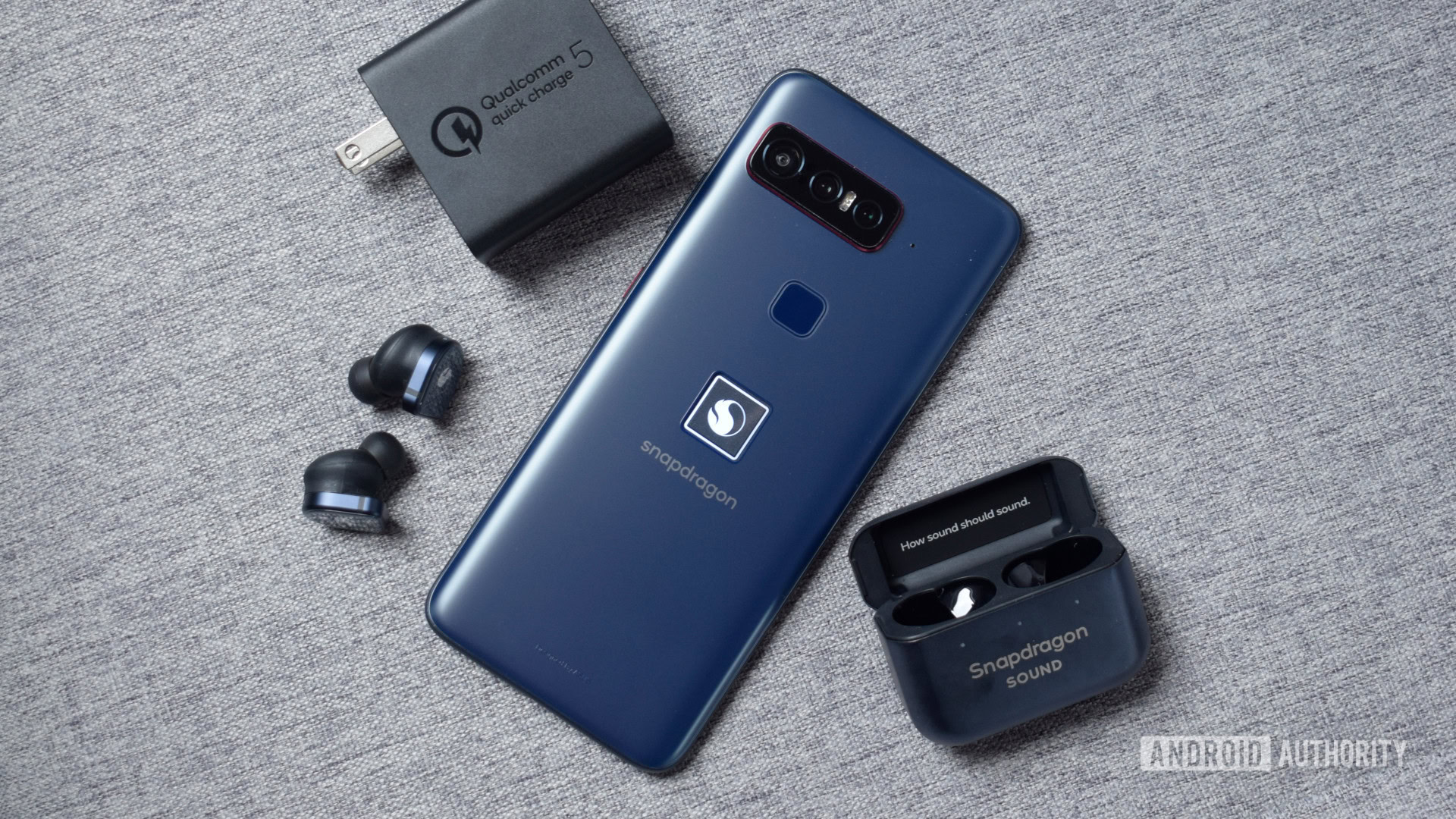
While best known for its mobile processors, Qualcomm’s technology ecosystem extends to so much more. The SFSI comes bundled with the company’s 65W Quick Charge 5 charger, two USB-C cables, a protective case, and a pair of Master & Dynamic true wireless active noise-cancelling earbuds.
Related: The best true wireless earbuds
The earbuds are built using Qualcomm’s QCC5141 Bluetooth Audio SoC. Sporting the company’s high-end aptX, aptX HD, and aptX Adaptive audio codecs, robust connectivity, in-ear detection, and a wireless charging carry case, these are designed to showcase the best audio technology that Qualcomm has to offer. They sound pretty great too, after struggling to find the perfect fit for my ears. Qualcomm notes that the retail version will include support for high definition audio and ultra-wideband voice via aptX Voice, which wasn’t implemented in the pre-production unit I tested.
As well as a powerful processor, Qualcomm packs in its best audio and charging tech too.
Sticking with audio features, the SFSI is equipped with Qualcomm’s broader Snapdragon Sound suite. As well as support for its latest codecs and wireless connectivity features, the solid-sounding dual speakers are powered by Qualcomm’s WSA8835 amplifier, which supports 32-bit 384kHz audio over a USB-C connector. There are also four beamforming MEMS Microphones with a 73dB Signal-to-Noise Ratio and 114dB Dynamic Range. Qualcomm rounds this out with a selection of sound optimization software features, catering to music, gaming, video, and voice profiles. However, there’s a bit of a software oddity, as some aptX-capable headphones default to Sony’s LDAC, where available, rather than using Qualcomm’s technology.
Qualcomm’s bundled Quick Charge 5 plug provides up to 65W of power. My testing clocked it closer to 45W, taking the phone from empty to full in between 42 and 51 minutes. That’s not the fastest charging technology around, but this implementation is temperature and usage-aware to ensure that the battery and handset last many years of use. Quick Charge 5 is also compatible with the universal USB Power Delivery PPS standard, making this charger suitable for all your other gadgets too. It’s a very good charging setup.
Smartphone for Snapdragon Insiders specs
| Smartphone for Snapdragon Insiders | |
|---|---|
Displays | 6.78-inch AMOLED 144Hz refresh rate 2,448 x 1,080 resolution 20.4:9 aspect ratio 1,200 nits peak brightness |
Processor | Qualcomm Snapdragon 888 |
RAM | 16GB |
Storage | 512GB UFS 3.1 No expandable storage |
Power | 4,000mAh battery 65W wired charging Quick Charge 5 |
Cameras | Rear: - 64MP wide, 2x1 OCL PDAF, 0.8μm, OIS, ƒ/1.8 - 12MP ultra-wide, dual pixel PDAF, 1.4μm, ƒ/2.2 - 8MP telephoto, 3x optical zoom, OIS Selfie: - 24MP |
Video | 8K 30fps, 4K 60fps, 1080p 60fps |
Audio | Stereo speakers Dolby Atmos support No 3.5mm headphone port aptX Adaptive Bluetooth |
Wireless | Wi-Fi 6E (802.11a/b/h/n/ac/ax) Bluetooth 5.2 NFC 5G sub-6GHz (Bands n1, n2, n3, n5, n7, n8, n11, n12, n13, n14, n18, n20, n21, n25, n26, n28, n30, n38, n40, n41, n42, n43, n46, n48, n66, n71, n77, n78, n79) 5G mmWave (Bands n257, n258, n260, n261) GPS, GLONASS, BDS, GALILEO, QZSS, NavIC |
Biometrics | Rear-mounted Qualcomm 3D Sonic Sensor Gen 2 |
SIM | Dual 5G nano-SIM tray |
Software | Android 11 |
Dimensions and weight | 173.15 x 77.25 x 9.55mm 210g |
Smartphone for Snapdragon Insiders review: The verdict
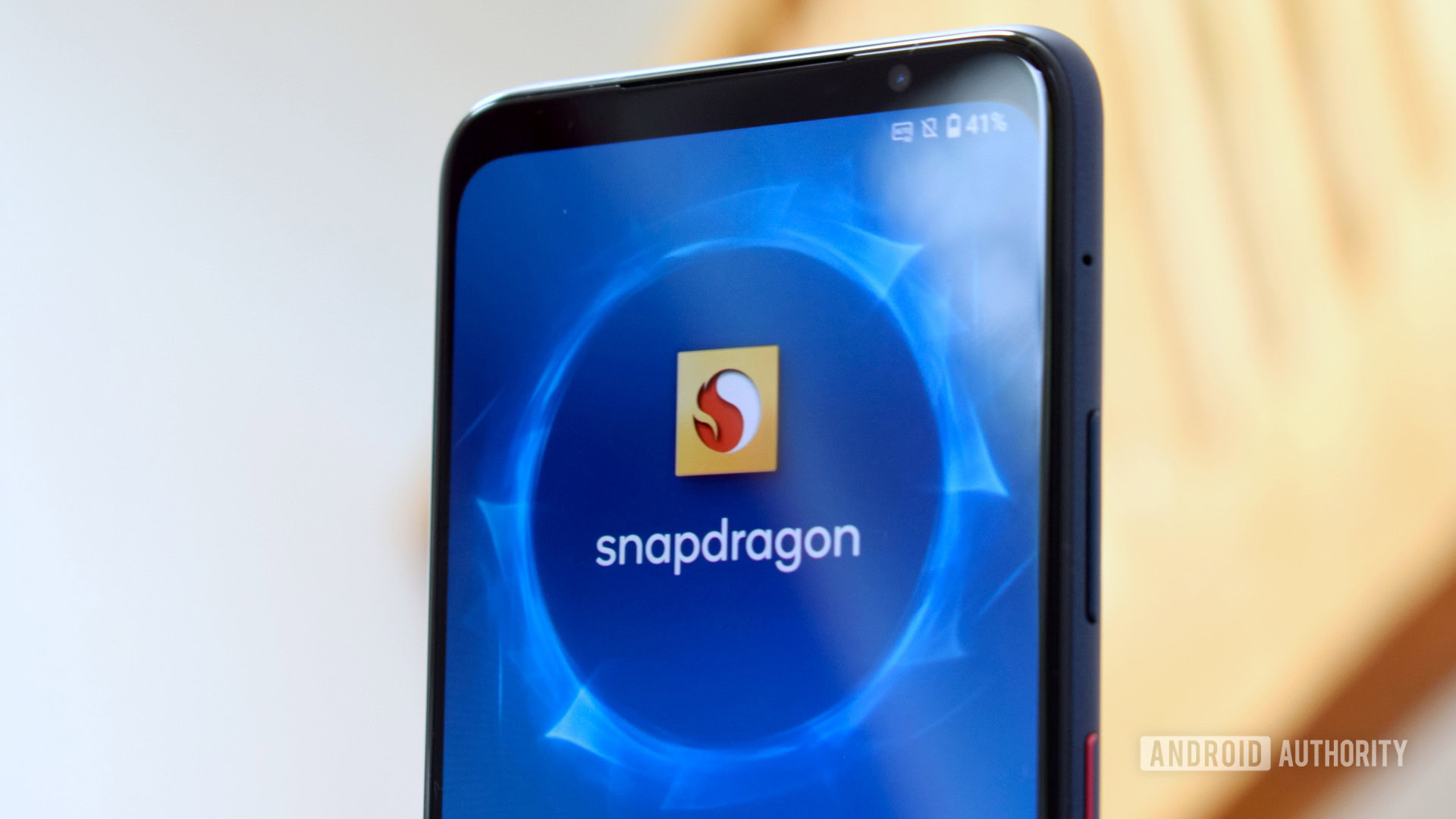
I’m pretty opposed to gaudy branding, and only a real Qualcomm fan (if there is such a thing) could love a phone and earbuds plastered with the Snapdragon logo. Looking past the emblems, the thick bezels, rear fingerprint placement, and generally chunky design feel out of date for such an expensive piece of hardware. The phone is built for specs rather than aesthetics, but Qualcomm and ASUS could have made more effort with the design to justify a price tag that exceeds top-tier Galaxy and iPhone handsets.
Appearances aside, the phone and bundled accessories are a real showcase for some of the best Qualcomm technologies around, particularly in the 5G, audio, gaming, and charging departments. But you’ll find many of these features inside other Snapdragon-powered handsets, as that’s the nature of Qualcomm’s business, after all. Where the handset stands out is its broad selection of tweakable settings to manage the phone’s battery life, performance, sound, and other capabilities. The SFSI offers an extra tier of customization that definitely plays to the power-user crowd.
The SFSI stands alone for its sheer selection of battery life, performance, sound, and other settings.
Unfortunately, camera issues (both hardware and software) are a big problem for a phone targeted at the flagship tier of the market. Likewise, the phone doesn’t boast an IP dust and water resistance rating, in-display fingerprint scanner, or wireless charging capabilities that are ubiquitous in today’s high-end smartphones. The SFSI isn’t a slam-dunk in the hardware department.
Then there’s the price. $1,499 is steep in anyone’s book, even with the accessories bundled in. The ASUS ROG Phone 5, on which this phone is based, costs a still rather steep $1,000 direct from ASUS, but you can grab one for ~$800 on Amazon. You’re trading a smaller battery and headphone jack for an iffy telephoto camera too, which may not suit every consumer, but it’s still a far better deal. As nice as the earbuds are, $500 could buy you some really premium audio gear. You can certainly get more for your money elsewhere.
Qualcomm’s vision for the ideal smartphone emphasizes tech, specs, and customizable performance, but that comes at the expense of the finesse we expect from premium handsets. Brute hardware may suit a small group of performance enthusiasts but even power users will find better options elsewhere.
